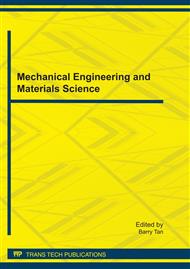p.91
p.95
p.101
p.105
p.111
p.116
p.121
p.127
p.132
Improved Ant Colony Algorithm and its Application to the Parameter Optimization in Rainstorm Intensity Formula
Abstract:
Ant Colony Algorithm (ACA) is a kind of excellent algorithm which solves the problem of combination optimization. However, there are a great many difficulties when the ACA is used to solve the problems of continuous optimization directly. In the paper, the author tries to introduce the evolutional strategy of the variable domain search item in order to improve the ACA. The improved ACA is applied to solving the continuous problems such as the parameter optimization in rainstorm intensity formula. The result which is compared with the results of other optimizing algorithms shows that the improved ACA can be used to solve the parameter optimization in rainstorm intensity formula. Moreover, the rainstorm intensity formula which is obtained the optimizing parameters by all kinds of optimizing algorithms is compared with the effect of fitting initial data. It is better than other optimizing methods. Ant algorithm is a new bionic algorithm which is put forward by Italian academician, Dorigo, et al. The academicians are inspired by the result which people studied the real ant colony behavior in nature [a-b]. The ant colony in nature finds out finally the shortest route from the nest to the food source by information exchange and cooperation each other when they search for the food in nature. According to the similarity between the Travelling Salesman Problem (TSP) and the process, Dorigo et al. solves the TSP at last by releasing “man-made ant”. Subsequently, the ACA obtains a successful application in a series of combinatorial optimizing problems such as job-shop dispatching problem, assigning problem and sequential ordering. These applications show the superiority of the ACA in finding the solutions to the complicated discrete optimizing problems. However, the continuous optimizing problem is different from the combinatorial one. What to find the solutions to the continuous optimizing problems needs that the algorithm can produce its new solution in the continuous solution space in order to find out the most excellent one while the ACA itself doesn’t have the function. Therefore, there are a lot of difficulties to find the solution to continuous optimizing problem directly [c-e]. On the basis of deep study for a great many algorithms which are applied to continuous optimizing problem, the author tries to introduce the evolutional strategy into the ACA and expects that the improved ACA is used to solve the continuous optimizing problem. And the excellent algorithm is introduced to the meteorological fields to solve a number of continuous optimizing problems.
Info:
Periodical:
Pages:
111-115
Citation:
Online since:
October 2011
Authors:
Price:
Сopyright:
© 2012 Trans Tech Publications Ltd. All Rights Reserved
Share:
Citation:


